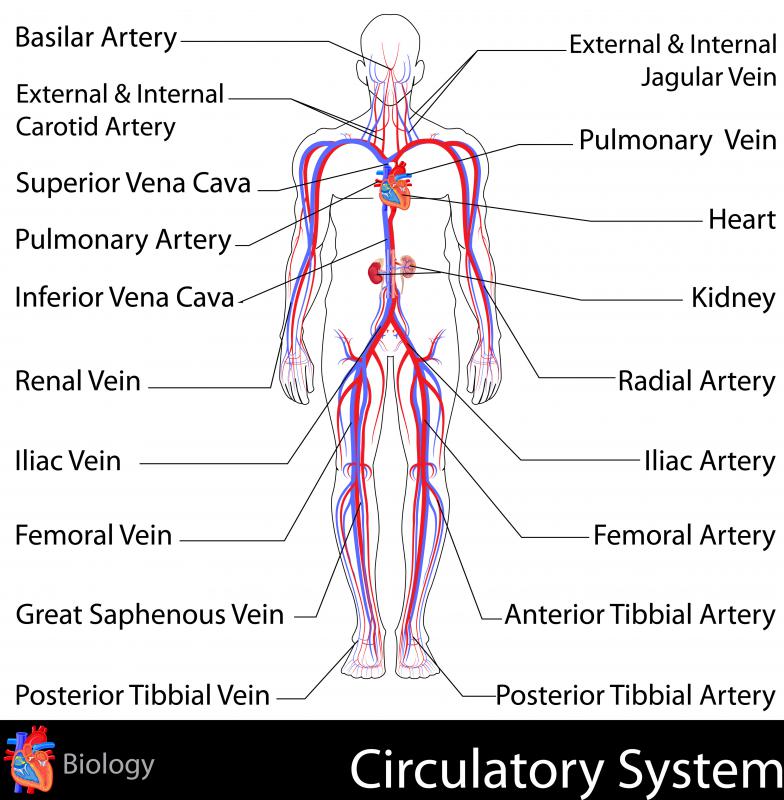At WiseGEEK, we're committed to delivering accurate, trustworthy information. Our expert-authored content is rigorously fact-checked and sourced from credible authorities. Discover how we uphold the highest standards in providing you with reliable knowledge.
What are the Saphenous Veins?
The saphenous veins are the two principal veins that run up the leg. The greater and lesser saphenous veins are categorized as superficial veins. They are located near the surface, above the muscle layer and just under the skin, and thus both are considered to be subcutaneous veins.
The greater saphenous vein, which is also commonly referred to as the large saphenous vein, runs up the medial, or inner, side of the leg from the foot to the saphenous opening. The saphenous opening is an oval slit in the broad fascia of the thigh, the broad fascia being a fibrous membrane covering the muscle layer. The greater saphenous vein empties into the femoral vein.

The lesser saphenous vein, also called the small saphenous vein, starts behind the outer malleolus. The outer malleolus is a bony protuberance on the outer portion of the ankle joint. The lesser saphenous vein then runs up the posterior, or back, of the leg and joins with the popliteal vein in back of the knee.
The greater saphenous vein has been called the "conduit of choice" by vascular surgeons. This vein is frequently used for peripheral arterial bypass surgeries due to its long-term patency (quality of openness) in comparison to synthetic grafts. The greater saphenous vein is also harvested by cardiac surgeons and used for transplantation during coronary artery bypass procedures. It is used primarily in the event that arterial grafts are unavailable or when multiple grafts are required, such as in triple or quadruple bypasses. Although the lesser saphenous vein can be used as an alternative conduit for grafting, it is not the first choice of most surgeons, and clinical studies are ongoing as to its efficacy.

The greater and lesser saphenous veins, like other superficial veins, can develop varices. This permanent dilation and lengthening of the vein, commonly known as a varicose vein, is not life threatening by itself, but it is generally thought of as unattractive. Treatment, including laser treatment, can correct a varicose greater or lesser saphenous vein.

Phlebitis, or infection of the vein, is also not uncommon in these veins. The greater and lesser saphenous veins can also thrombose, or become blocked, which in turn can cause a specific type of infection called thrombophlebitis. In isolation, thrombophlebitis of either the lesser or greater saphenous veins is not life threatening, but it can be dangerous if it occurs concurrently with deep vein thrombosis (DVT). Neither the lesser nor greater saphenous veins are any more or less prone to risk of these pathologies than any other leg vein.
AS FEATURED ON:
AS FEATURED ON:
















Discuss this Article
Post your comments